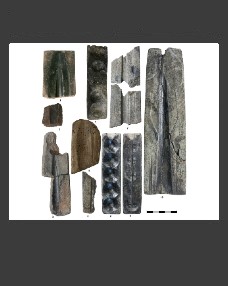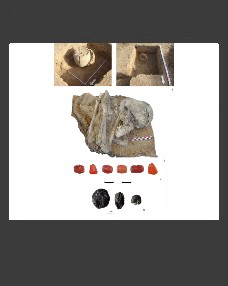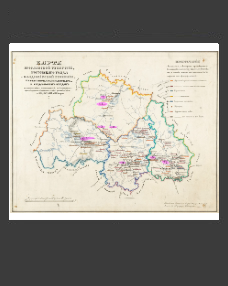Roman N. Modin*, Igor V. Zhurbin**, Margarita G. Ivanova***
* Institute of Archaeology RAS, Moscow, Russia (modin.roman@mail.ru)
** Physical-Technical Institute, Ural Branch of RAS, Izhevsk, Russia (zhurbin@udm.ru)
*** Udmurt Institute of History, Language and Literature, Ural Branch of RAS, Izhevsk, Russia (margrig45@mail.ru)
Key words: Middle Ages, Cheptsa culture, Uchkakar, geophysics, rampart, ditch, defensive constructions, cultural layer, timber-laced rampart.
The article presents the materials of interdisciplinary field studies and the results of reconstructing the inner line of defenses at Kushman Uchkakar, which dates to the 9th‑13th centuries and is one of the key sites of Cheptsa archaeological culture. Alongside with Idnakar and Guryakar, Uchkakar is a large fortified settlement in the Cheptsa river basin, with a cemetery and three settlements in the immediate vicinity. The inner defensive structures at Uchkakar, which are not visible on the ground, have been detected with the help of geophysical methods. The article presents the methods used for uncovering and recording the strata. The reconstruction is based on studying – Rus fortification and on the assumption that the inner line of defenses at Uchkakar will have been timber-laced earthen ramparts. Analysis of the structure and composition of the strata in the filling of the ditch, the mutual alignment of the horizons and the remains of the timber constructions allow assuming that the defenses will have comprised two rows of ground-filled timberwork. The reconstruction is a new achievement in the archaeology of the Urals region. We have identified the time periods when the defensive structures will have fallen into disuse and become part of the settled territory. Based on the location of chronologically indicative finds (fig. 6) the article offers a chronological framework for the creation, functioning and deterioration of the line of defenses. The defensive structures must have been built during the initial period of existence of Uchkakar and eventually perished in the 10th‑11th centuries The materials of the present study add to the already existing source base on the building and functioning of defensive systems at Medieval Finno-Ugric sites in the Urals region.
DOI: 10.7868/S0869606318020071







